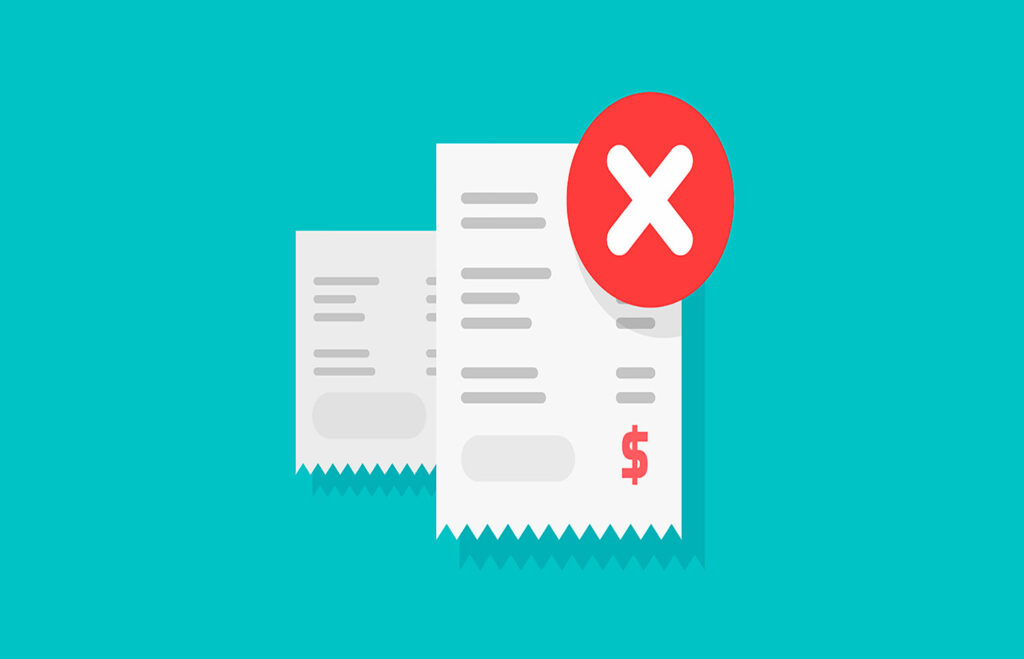We all know the subscription-based business model is increasingly popular because it provides a continual stream of recurring revenue. This was a driving force behind the model’s explosive growth during the depths of the pandemic. When new business slowed, subscription businesses could fall back on their customer bases.
But of course, in order for a recurring revenue stream to be reliable, customers need to be billed again and again and again…
While the process of recurring billing and collecting becomes routine, even the most efficient, well-organized businesses can make mistakes from time to time. And this is especially true when billing tasks are being handled manually.
It’s easy to chalk the occasional error up to inevitability and assume your customers will see things the same way. And perhaps some of them will some of the time.
Nevertheless, as a business grows and the opportunities and scope for error broadens, a business model that’s overly reliant on its customers’ patience and goodwill isn’t sustainable.
Inaccuracies in recurring billing have serious impacts, both for your customers and your business. Do you know how many mistakes your business is making?
Identifying these problems and taking preventative action helps you recover leaking revenue and avoid painful blows to your MRR.
1. Your subscription customer experience suffers.
The way customers experience your brand has become increasingly important in the world of SaaS. In fact, a recent survey showed 46% of SaaS businesses view customer experience as a major priority in the next five years. In that same vein of thought, a 2020 Walker study showed customer service may soon overcome price as a key brand differentiator.
So where does this leave a business that struggles to bill its customers with reliable accuracy?
When your team is performing recurring tasks and processes in a manual way, it’s inviting a wide range of human errors that, sooner or later, disrupt the customer experience.
- A customer’s name or business details might appear incorrectly on an invoice
- they might be billed the wrong amount or with an incorrect discount, or
- they could be charged for a feature or service they weren’t even using at all.
These kinds of mistakes happen, and logistically they can be complicated to clear up—especially if your customer success team is struggling to access information that might clarify the problem. For the customer, the situation can be equally troubling.
One mistake might be forgiven. Several? Probably not.
As Kaiser Mulla Feroze of Benchling put it, “Companies need to prove their worth—day after day, month after month, year after year.”
Even if you have a proven history of excellent service, all it takes is a few mistakes to disrupt a customer’s positive impression and erase your months or even years of hard work.
2. Your customer churn rate increases.
Sure, a convergence of factors—product, features, price etc.—contributes to your ultimate churn rate. But there’s no questioning the fact that your customer experience is a major factor.
Nearly a third of customers report they’d leave a brand they love after just one bad experience. And 92% say they’ll completely turn away from a business after several mistakes.
In other words, each wave of slightly incorrect invoices poses a legitimate risk to your business’s MRR. And the closer you look at the issue, the more frightening it becomes.
- Outgoing dissatisfied customers tend to discuss bad brand experiences at twice the rate that people discuss positive experiences.
- Additionally, high levels of churn correspond significantly with low rates of growth, making it very difficult for mistake-plagued businesses to get ahead.
Mistakes aren’t the only way manual billing processes increase churn rates either. Failed payments can lead some customers to churn out by mistake. When a failed payment goes unresolved and service is suspended, customers may never take the action needed to get back into good standing.
Whereas automated billing systems allow for automated retries and follow-up emails, manual systems require all the work to be done by hand. This makes it easy to accidentally let customers slip through the cracks.
3. Your recurring billing business starts leaking revenue.
Some recurring billing inaccuracies might actually be pleasing to your customers—namely, being continually underbilled. But these kinds of mistakes will damage your MRR just the same.
Many things contribute to revenue leakage. Perhaps an expired discount was accidentally never removed from a customer’s account. Maybe price uplifts weren’t applied when they should have been, or a customer is simply being billed for a service that costs less than the one they’re actually using.
These types of mistakes can add up to a significant amount of lost money over time.
Revenue leakage is estimated to cost businesses up to 5% of their revenue every year. This means a business with annual revenue of $1 million could lose up to $50,000 to simple, needless mistakes.
In addition to being costly, these errors are also very tedious and time-consuming to correct. While your team tries to fix what went wrong, they lose time that could have been better spent on more strategic activities.
4. Complications crop up in your reporting.
Sometimes there’s just no practical way to make a necessary account adjustment. And this means relying on a workaround.
For example, some businesses that still rely on manual recurring billing systems have no efficient way to perform customer plan migrations.
When a customer chooses to move to a higher or lower plan, the business is forced to terminate their old account and create a new one. This leads to the following reporting inaccuracies.
- “False churn”—the appearance that a customer left, even though they didn’t really, and
- an upgrade disguised as a new contract, which gives the appearance of fresh recurring revenue, even though it’s actually expansion revenue.
While these problems may not be as severe as actually losing a customer to churn, they do have an impact on business reporting and strategy.
Your team needs to have an accurate understanding of where it’s seeing expansion and contraction revenue from a customer success point of view. Burying this information with workaround subscription management processes eliminates opportunities for strategic action.
5. Your revenue recognition is incompliant or non-existent.
Anyone in the world of recurring billing knows revenue recognition is complicated enough without human error and omission being thrown into the mix. Almost every situation listed above introduces the possibility of reporting inconsistencies.
Inaccurately recording revenue throughout your recurring billing cycle means you aren’t going to be in compliance with generally accepted accounting principles (GAAP) and the ASC 606 standard. What do you think will happen if you get audited?
Aggravating a customer is bad. Aggravating the IRS is worse.
The good news? Recurring billing inaccuracies are easy to avoid!
If there’s an upside to all these inaccuracies and the problems they create, it’s that each of them can be avoided with relative ease with the right digital transformation.
Automated recurring billing platforms eliminate the potential for all these mistakes while also drastically reducing the amount of time that goes into invoicing, subscription management, and other billing-related tasks and processes.
And implementing a digital transformation is about more than just error avoidance. Maintaining up-to-date technology improves your business’s accuracy, efficiency, and scalability. It also dramatically reduces your revenue leakage and helps keep you ahead of the competition.
Around 70% of businesses are currently working on their digital transformations, meaning without the right tech upgrades, you’ll fall behind.
John Chambers of Cisco frames the situation quite severely when he said, “At least 40% of all businesses will die in the next 10 years… if they don’t figure out how to change their entire company to accommodate new technologies.”
The stakes are high, the solution clear. Through technological transformations, businesses of almost every variety can reduce mistakes, maximize their efficiency, and improve their growth potential.








